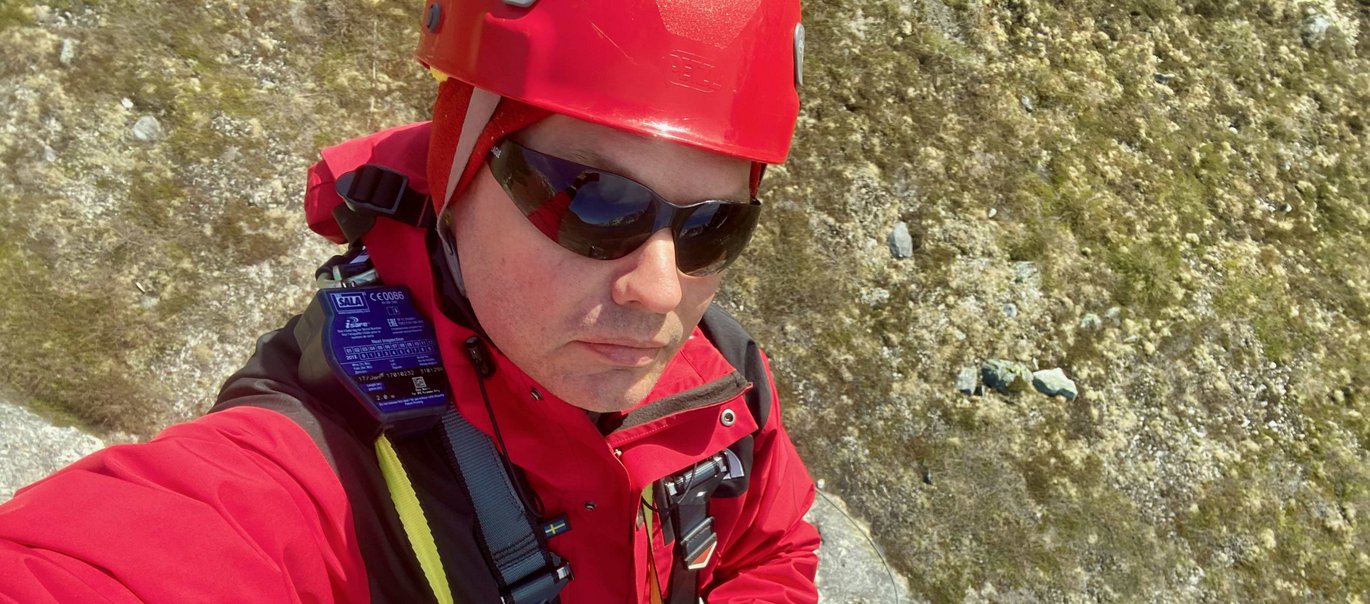GEM scientist Of The Month - November
This month we have interviewed Arno Hammann, who is the new programme manager of ClimateBasis Disko since January 2020. We are happy to get his story on how he finally reached his ‘destination’ in Greenland, where the climatic and ecological changes are happening very fast - just outside his windows.

As you are a relatively new member of GEM, would you mind sharing your research focus?
I am quite new to the GEM program and have just started as the program manager for ClimateBasis Disko, so my “research program” is still in development. I plan to focus, in the near future, on boundary layer climatology and the role of moisture in the atmosphere, in particular in connection with the atmospheric data acquired by a passive microwave radiometer our program is operating at the Disko site. The processes by which moisture and clouds feed back onto the broader trends of surface warming and global changes in the climate system are still poorly understood – in particular in remote Arctic locations with few available scientific observations.
Since when and at which site are you working for GEM and what do you enjoy most about it in the GEM context?
I started at ClimateBasis Disko in January 2020, and am also involved with ClimateBasis Nuuk and RemoteBasis. I enjoy in particular the close personal connection with the research sites – to understand the various interactions between processes that occur at a given location from a scientific point of view, first-hand experience of the place is invaluable. At each GEM site, a large variety of parameters is measured and great attention is being paid to how the observations complement each other, both within and between sub-programs. On this basis, it is possible to develop a thorough understanding of the processes shaping these locations.
How does your fieldwork look like and which plans are coming up next season?
Our fieldwork consists primarily of the maintenance and upgrade of our infrastructure at the GEM site, but sometimes includes some more singular components such as scouting for locations to put up new sensors. For next spring, we intend to perform a snow survey, which will include both on-the-ground observations and measurements and drone-based snow volume mapping. Such a survey was performed for the first time at Disko in 2019, with the intention of making it a regular data acquisition activity similar to what has been done at the Nuuk site for many years.
What is the single biggest leap of technology you noticed in your field of research in the most recent years and how did it change it?
I’m personally quite interested in the application of modern machine learning techniques to data analysis, but I see this more as a continued trend (it is, after all, just statistics in a sexier packaging) than a “leap”. That being said, the explosion of off-the-shelf software implementations for statistical analysis in general is quite enabling. In that connection, one might also mention that the proliferation of open-source licensing/collaboration models has been a boon to data-driven science, not least for scientists from poorer countries with tightly constrained science funding.
What got you hooked on the Arctic environment?
As a teenager, I spent the first money I had ever earned to travel to Greenland – mostly because glaciers and icebergs had always been a source of aesthetical fascination for me. It is also a habit of mine to ponder important life decisions while hiking in nature, and it was during that Greenland trip that a decision on what to study at university was due. In subsequent years, I spent many summer vacations travelling, hiking and occasionally working (tourist guide, etc.) throughout the Arctic. As a researcher, I later had the opportunity to get involved in projects focused on Arctic (and Antarctic) climate and hydrology. Arriving in Greenland feels a bit like the destination after a two decade-long personal odyssey through many different countries where I have lived and worked. The Arctic is an immensely interesting and important place to study since climatic and ecological changes are happening very fast and with global consequences here.
What is the biggest challenge in working in the Arctic or maybe as a scientist in general?
Science is challenging almost by definition. It is always about exploring the frontier of what is known, and in the Arctic this nearly coincides with the frontier of where life can exist at all. And the challenge constantly changes. But the more pragmatic answer is: how to meet scientific expectations with the limited funds available, both in terms of equipment and (high) field work costs and the man-hours necessary to do any meaningful scientific work.
What kept you pursuing a career as scientist despite the obstacles?
My reason for doing it science is simple: It’s necessary and meaningful. For humanity as a whole, understanding climate, the ecosphere and their mutual interactions is absolutely essential. For the future, I hope that society values and listens more to what science has to say.
How do you spread the science? Which forms of outreach do you use most / find most effective?
This is an area in which I have yet a lot to learn. I am not sure how to judge the “effectiveness” of any of the outreach channels I have tried from popular-science writing/journalism, teaching, video, websites to more direct and probably impacting forms of communication such as teaching, talks etc. As for the elephant in the room, social media, I think it is a communication device whose dynamics and impacts are very poorly understood at present, and which should be used cautiously in science communication.